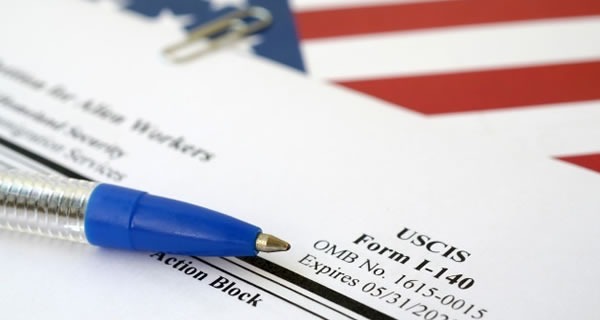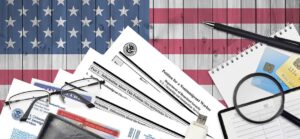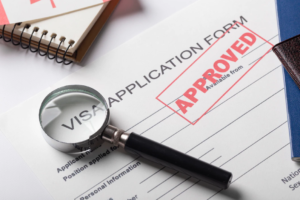How to Respond to a USCIS Request for Evidence (RFE)

A Request for Evidence (RFE) is sent by the United States Citizenship and Immigration Service (USCIS) when they require additional information to process your immigration petition or application.
When you receive a Request for Additional Evidence letter from USCIS it means that the Immigration officer analyzing your application was not satisfied with the information included in your original application package and requires more information before proceeding to approve or deny your application or petition. RFE letters are critical and responding fully and correctly is important to getting your immigration application approved.
When you apply for a visa or green card to immigration, you invest a lot of time, effort, and money with the goal of obtaining the benefit. For this reason, it is extremely important to read the RFE letter carefully and take the time to gather the best possible evidence and demonstrate to Immigration that you qualify and meet each requirement. The applicant has the burden of proving that he/she qualifies for the visa or green card requested. USCIS does not assume that you qualify, on the contrary, the expectation is that the applicant is the one who shows that they qualify.
What is an RFE?
An RFE is a message sent by the USCIS Officer reviewing your case asking for additional information that is necessary to proceed with the application or petition. It helps the USCIS to complete documentation, clarify ambiguities, and correct incongruities.
A Request for Evidence is not a denial of your application, but a request to submit more information. It is usually the last opportunity you have to cure any deficiencies, so your case is not denied. Click here to find out what to do if your green card gets denied.
This notice typically includes specific details so that the petitioner or applicant can successfully address the issues pointed out. The USCIS guidelines require an RFE to elaborate the requirements that have not been fulfilled and why the original petition or application was unable to meet those requirements.
An RFE clearly explains the matters that need to be addressed and may even contain a non-exhausted list of suggestions to guide the petitioner or applicant. It generally lists the evidence required by the relevant statute, form, regulation, or instruction.
Components of an RFE
Here is a breakdown of what an RFE may contain:
Facts
A Request for Evidence starts with a paragraph about the original application or petition. It consists of the type of benefit sought, the date on which the USCIS received it, and the office that is currently managing it. This paragraph usually also states that the USCIS lacks evidence to further process your application.
Law
An RFE refers to the relevant law regarding your application or petition, such as the Immigration and Nationality Act (INA) and the Code of Federal Regulations. The section of the law informs you of the legal requirements that must be met.
Evidence Submitted
This part will contain all the documents that you have already submitted along with your application. Make sure you go through this carefully to check whether all submitted documents are listed here. Also note down anything that you feel is missing and might be helpful for the application process, so that you can send it in your response package to a USCIS Request for Evidence.
Evidence Missing
This portion of the RFE letter consists of all additional documents that the USCIS needs to make a decision about your case. It may also contain the eligibility requirements which have not been met by the documents you have already submitted. This is often a non-exhaustive list with boilerplate language. It is important that you clearly explain how the documents you submit meet the legal requirements.
Response to a USCIS Request for Evidence
Once you have noted down the evidence required and collected it, start formulating your response to the RFE within the deadline given.
The first step is to make a copy of the RFE for your own reference, as you would be required to submit the original along with your response. Here is a list of all items that your response package needs to contain:
- The first document should be the original RFE notice that you had received from the USCIS;
- A cover letter or index that lists all evidence you are submitting. Although this is not mandatory, the cover letter is very useful for showing the USCIS officer that you have submitted all the requested information. In the cover letter attorneys usually address how all the evidence submitted meets the burden of proof and that legal requirements are met;
- Copies of all the documents and evidence to support your response. You should never send originals unless explicitly requested to do so.
Make sure that you provide all the requested evidence in a single response package. Do not make the mistake of submitting multiple responses as you gather evidence.
In case you are unable to collect some parts of the requested evidence within the timeframe provided, make sure to add an explanation as to why you do not have access to the missing documentation and submit alternative evidence if possible.
USCIS gives you only one opportunity to submit additional information. Once USCIS receives your response, they adjudicate with the information they have. There is no second or third chance to add documentation or evidence to your case. Therefore, your answer must be detailed and complete. Sometimes the proper answer can be complex, and the deadline may be just around the corner, so consider getting help from an immigration attorney if you are unsure what type of evidence you need to submit to satisfy USCIS inquiry in your response.
Keep a copy of your response and mailing. Mail your response to the USCIS Request for Evidence package to the address listed on the RFE. Make sure you are able to track the package and confirm its delivery to the USCIS. If you have any questions, contact us at 1(407) 818-1244 or email service@immigration-uni.com.




























